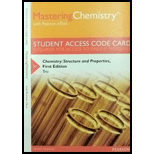
Interpretation:

Solid: Solid is a sample of matter that retains its shape and density when not confined. Stronger forces of attraction exist between atom/ions/ molecules.
Liquid: A liquid is a sample of matter that conforms to shape of container in which acquires a defined surface in the presence of gravity. In this state weaker force exist between atoms/ ions/ molecules.
Gas: A gas is a sample of matter that conforms to the shape of container in which it is placed and acquires whole volume of container.
Negligible forces of attraction exist between atoms/ions/molecules.
Supercritical fluid: Fluid over its critical temperature and pressure exhibiting good solvent power.
Boling point: The boiling point of a substance is the temperature at which the vapour pressure of the liquid equal the pressure surrounding the liquid and liquid change in vapour
Normal point: The normal boiling point of a substance is defined as the temperature at which the vapour pressure of the liquid becomes equal to at the sea level.
Concept introduction:
This is the generic phase diagram. This graph show phase change as a function of temperature and pressure.
To determine:
Argon has a normal boiling point at and a melting point of its critical temperature is and critical pressure is atm. It has triple point at and . Sketch the phase diagram and find out which has greater density solid argon or liquid argon.
Want to see the full answer?
Check out a sample textbook solution
Chapter 13 Solutions
MasteringChemistry with Pearson eText -- Standalone Access Card -- for Chemistry: Structure and Properties
- The vapor pressure of ethanol, C2H5OH, at 50.0 C is 233 mmHg, and its normal boiling point at 1 atm is 78.3 C. Calculate the vapH of ethanol.arrow_forward8.48 Why must the vapor pressure of a substance be measured only after dynamic equilibrium is established?arrow_forwardA pure substance X has the following properties: Mp=90C, increasing slightly as pressure increases; normal bp=120C; liquid vp=65mm Hg at 100C, 20 mm Hg at the triple point. (a) Draw a phase diagram for X. (b) Label solid, liquid, and vapor regions of the diagram. (c) What changes occur if, at a constant pressure of 100 mm Hg, the temperature is raised from 100C to 150C?arrow_forward
- Krypton, Kr, has a triple point at 169C and 133 mmHg and a critical point at 63C and 54 atm. The density of the solid is 2.8 g/cm3, and the density of the liquid is 2.4 g/cm3. Sketch a rough phase diagram of krypton. Circle the correct word in each of the following sentences (and explain your answers). a Solid krypton at 130 mmHg (melts, sublimes without melting) when the temperature is raised. b Solid krypton at 760 mmHg (melts, sublimes without melting) when the temperature is raised.arrow_forwardThe phase diagram for water over a relative narrow pressure and temperature range is given in Figure 9.19. A phase diagram over a considerably wider range of temperature and pressure (kbar) is given nearby. This phase diagram illustrates the polymorphism of ice, the existence of a solid in more than one form. In this case, Roman numerals are used to designate each polymorphic form. For example, Ice I, ordinary ice, is the form that exists under ordinary pressures. The other forms exist only at higher pressures, in some cases extremely high pressure such as Ice VII and Ice VIII. Using the phase diagram, give the approximate P and T conditions at the triple point for Ice III, Ice V, and liquid water. Determine the approximate temperature and pressure for the triple point for Ices VI, VII, and VIII. What is anomalously different about the fusion curves for Ice VI and Ice VII compared to that of Ice I? What phases exist at 8 kbar and 20 °C? At a constant temperature of −10 °C, start at 3 kbar and increase the pressure to 7 kbar. Identify all the phase changes that occur sequentially as these conditions change. Explain why there is no triple point for the combination of Ice VII, Ice VIII, and liquid water.arrow_forwardReferring to Figure 9.7, state what phase(s) is (are) present at (a) 1 atm, 10C. (b) 3 mm Hg, 20C. (c) 1000 mm Hg, 75C.arrow_forward
 Chemistry: Principles and PracticeChemistryISBN:9780534420123Author:Daniel L. Reger, Scott R. Goode, David W. Ball, Edward MercerPublisher:Cengage Learning
Chemistry: Principles and PracticeChemistryISBN:9780534420123Author:Daniel L. Reger, Scott R. Goode, David W. Ball, Edward MercerPublisher:Cengage Learning Chemistry: The Molecular ScienceChemistryISBN:9781285199047Author:John W. Moore, Conrad L. StanitskiPublisher:Cengage Learning
Chemistry: The Molecular ScienceChemistryISBN:9781285199047Author:John W. Moore, Conrad L. StanitskiPublisher:Cengage Learning EBK A SMALL SCALE APPROACH TO ORGANIC LChemistryISBN:9781305446021Author:LampmanPublisher:CENGAGE LEARNING - CONSIGNMENT
EBK A SMALL SCALE APPROACH TO ORGANIC LChemistryISBN:9781305446021Author:LampmanPublisher:CENGAGE LEARNING - CONSIGNMENT
 Chemistry: An Atoms First ApproachChemistryISBN:9781305079243Author:Steven S. Zumdahl, Susan A. ZumdahlPublisher:Cengage Learning
Chemistry: An Atoms First ApproachChemistryISBN:9781305079243Author:Steven S. Zumdahl, Susan A. ZumdahlPublisher:Cengage Learning ChemistryChemistryISBN:9781305957404Author:Steven S. Zumdahl, Susan A. Zumdahl, Donald J. DeCostePublisher:Cengage Learning
ChemistryChemistryISBN:9781305957404Author:Steven S. Zumdahl, Susan A. Zumdahl, Donald J. DeCostePublisher:Cengage Learning





